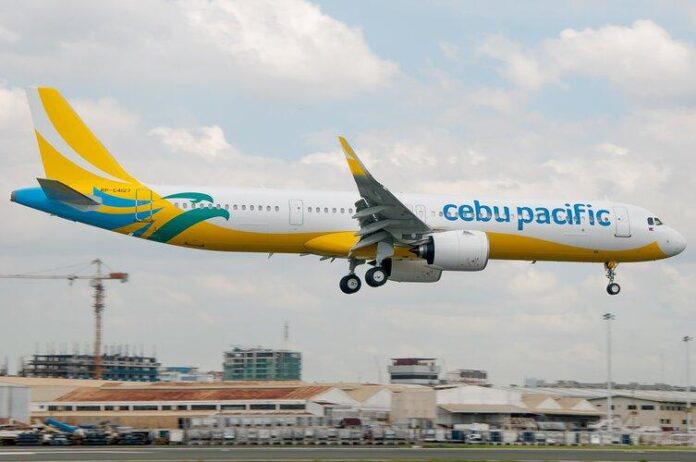-
Cebu Pacific took a net loss of P12.05 billion in the first nine months this year, 45.2% lower than its P21.99 billion net loss in the same period in 2021
-
Revenue surged 310.2% on a significant increase in passenger volume, cargo services and flight activities as the COVID-19 restrictions had eased by March 2022
-
Operating expenses rose 74.1% due to high flying expenses and foreign exchange rate blows
-
The carrier remains cautiously optimistic and expects demand for airline services to grow further not just domestically but even overseas
Cebu Pacific reported a net loss of P12.046 billion for the first nine months of 2022, 45.2% lower than the P21.993 billion net loss incurred for the same period last year.
Revenue totaled P37.53 billion from January to September 2022, rocketing 310.2% from P9.15 billion during the same period last year, parent firm Cebu Air Inc. said in a regulatory disclosure.
Overall revenue growth was driven primarily driven by significant increases in passenger volume, cargo services and flight activities as COVID-19 restrictions had already been relaxed by March 2022.
From the second quarter this year, most parts of the country had been under the more relaxed Alert Level 1, which was retained until August.
As a result, Cebu Pacific has restored its system-wide capacity near its pre-pandemic level following a continuous ramp-up of its domestic and international routes.
The airline is expecting demand for airline services to grow further, not just within the Philippines but even overseas.
Passenger revenue rocketed 572.5% to P22.48 billion for the first nine months of 2022 from P3.34 billion during the same period in 2021.
This was mainly attributable to the 450.8% upsurge in passenger volume from 1.9 million to 10.4 million the number of flights increased 255.9% in tandem with an 18.6 percentage point rise in seat load factor from 55.8% to 74.4%. An average 22.1% increase in fares helped propel passenger revenue.
Revenue from cargo operations likewise jumped 31.7% to P5.62 billion from P4.26 billion. This was primarily driven by a 19.1% increase in cargo kilograms flown from 83 million to 98.9 million, coupled with a 10.6% rise in cargo yield to P56.79.
Ancillary revenues also shot up 511.6% to P9.44 billion from P1.54 billion, largely due to greater passenger volume and flight activity during the period.
The group’s operating expenses, however, grew 74.1% to P48.73 billion for the first nine months of the year from P27.99 billion in the same period last year.
Cebu Pacific said this was mostly driven by the expansion in the group’s operations due to the easing of COVID-19 restrictions, as a material portion of its expenses depends on flights and flight hours. The Philippine peso depreciation against the US dollar also contributed to increased operating expenses.
Moreover, flying operations expenses soared 333.5% to P19.56 billion largely due to fuel consumption surging 186.6% in line with the expanded flight activity and increases in the average published fuel price.
“We are encouraged by some notable improvements in our numbers amid the ongoing challenges related to fuel and foreign exchange rates. We remain cautiously optimistic that through our ongoing initiatives, coupled with a sustained increase in passenger traffic, we will soon see better days ahead,” Cebu Pacific chief financial officer Mark Cezar said in a separate statement.
The Cebu Air group consists of Cebgo, Aviation Partnership (Philippines) Corp., and 10 special-purpose vehicle entities.
As of September 30, the group operated a network serving 60 domestic routes and 21 international routes with a fleet of 77 aircraft.
RELATED READ: Cebu Pacific narrows first-half net loss by 31%





